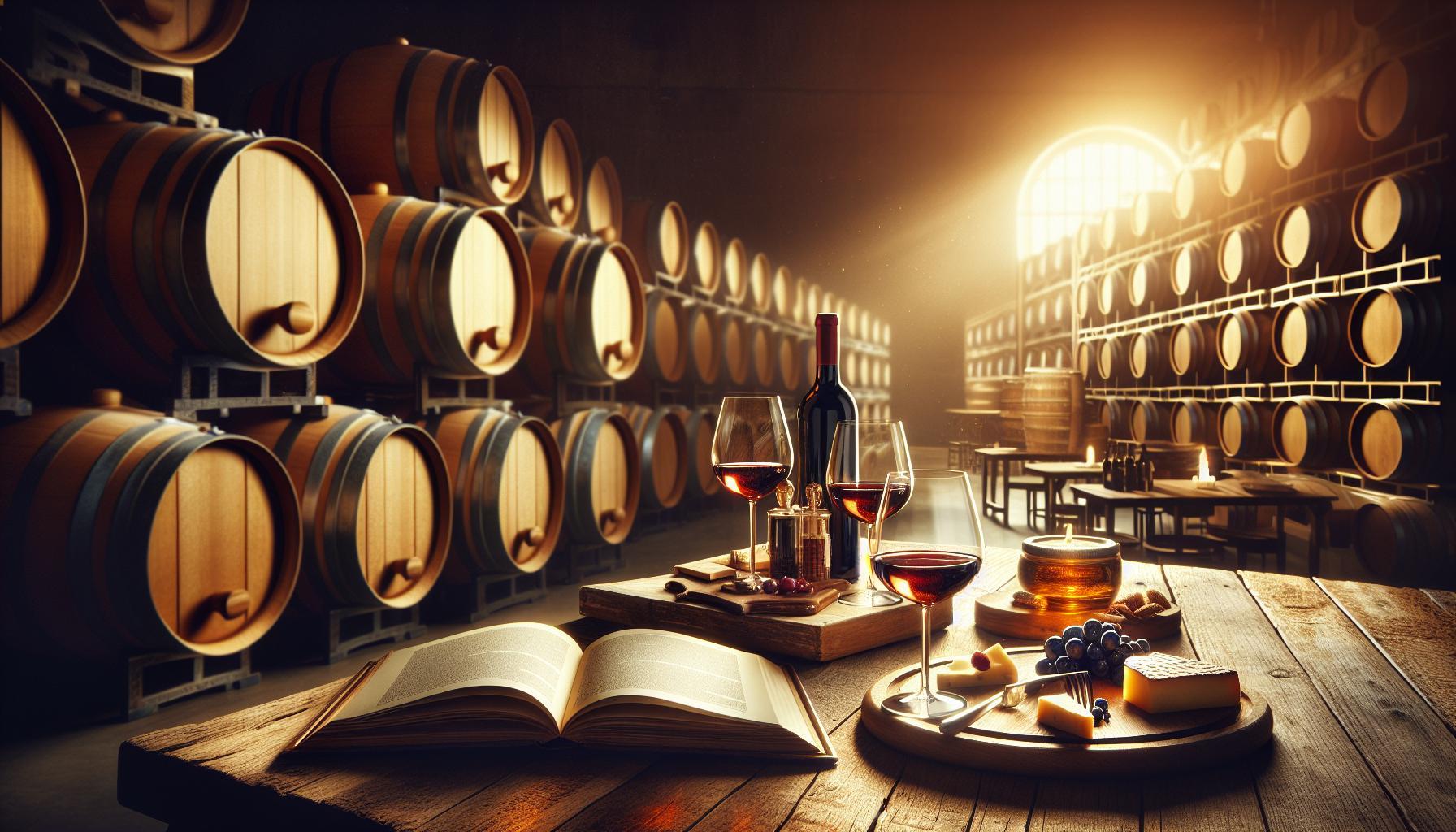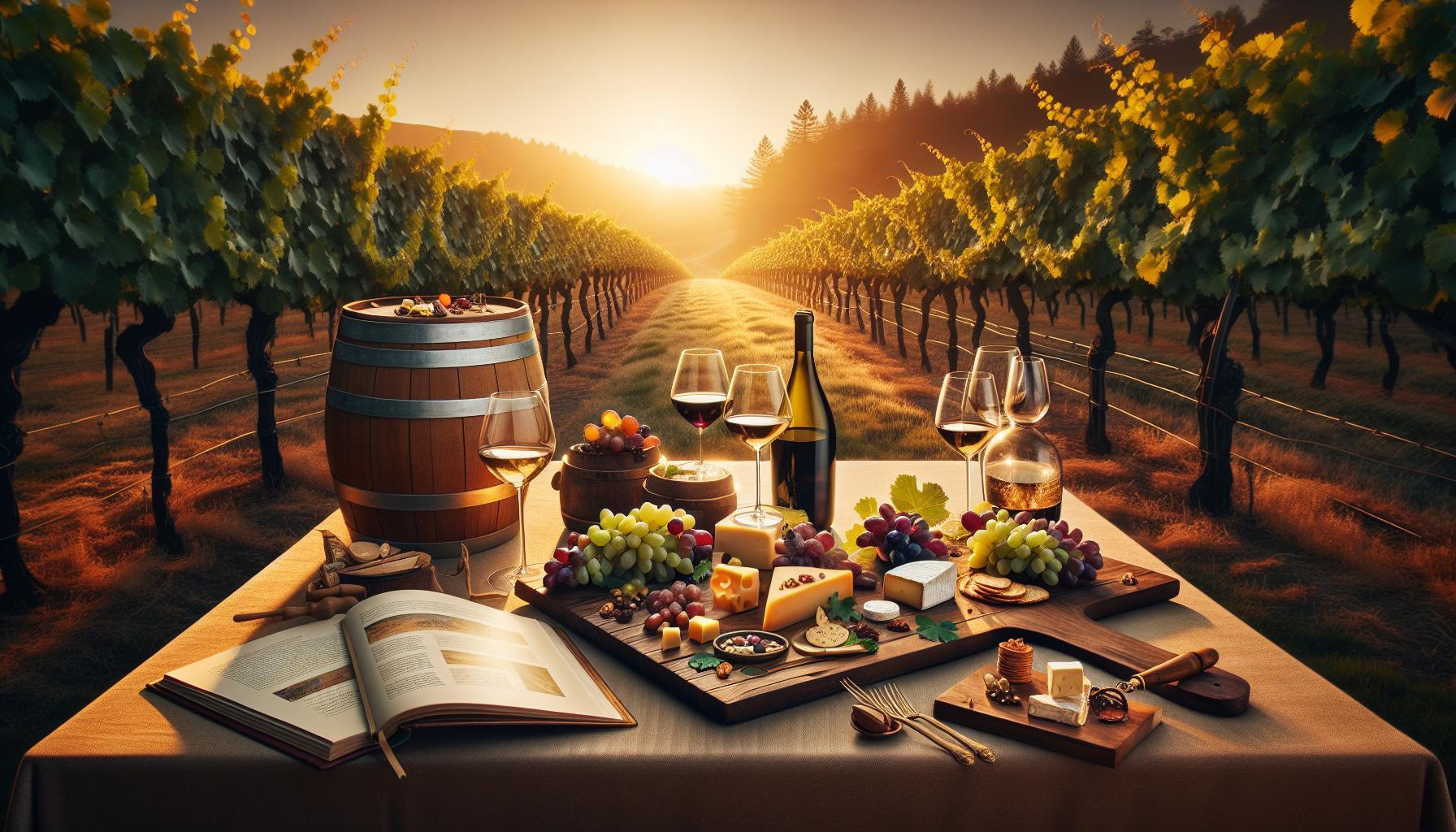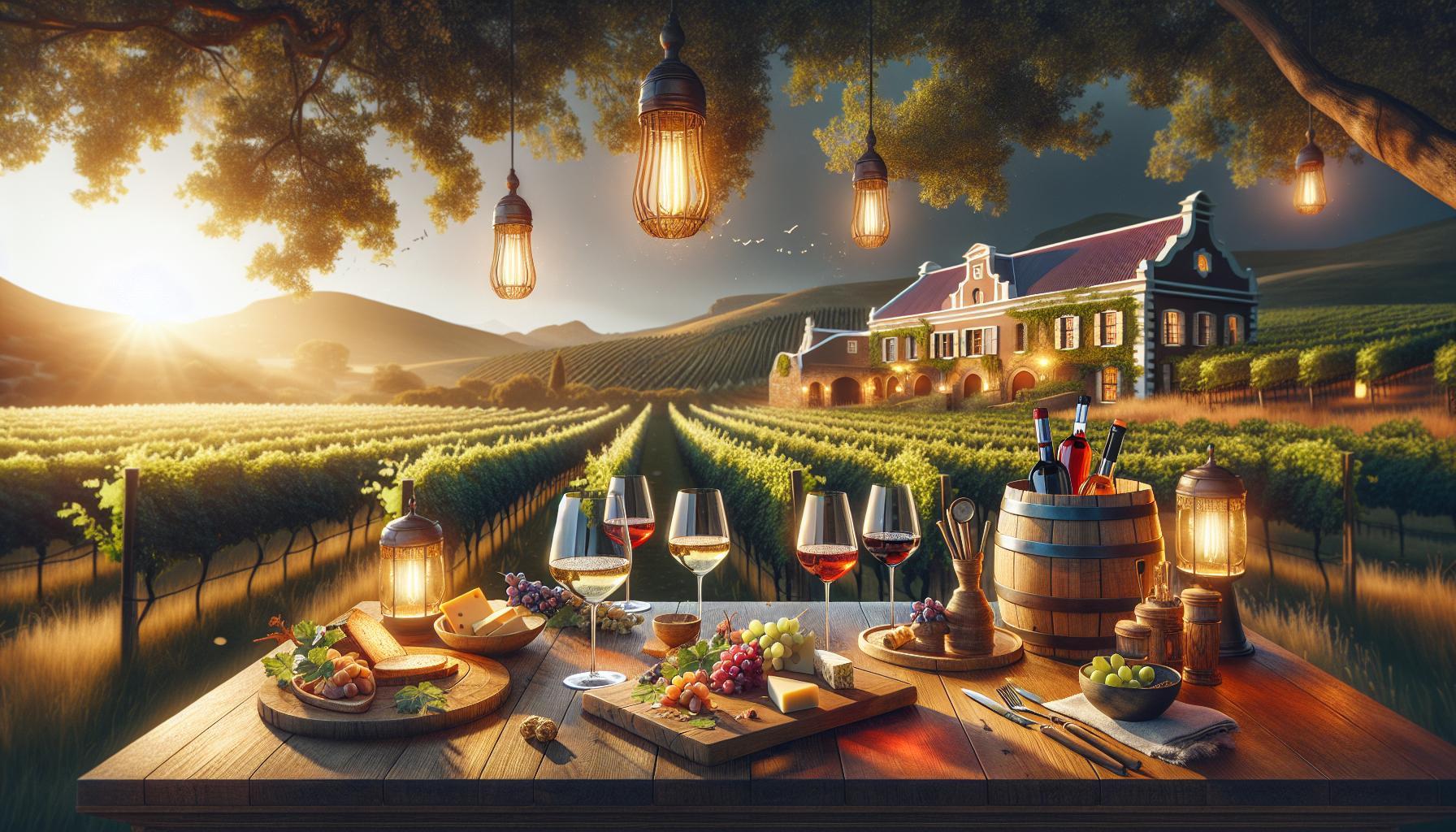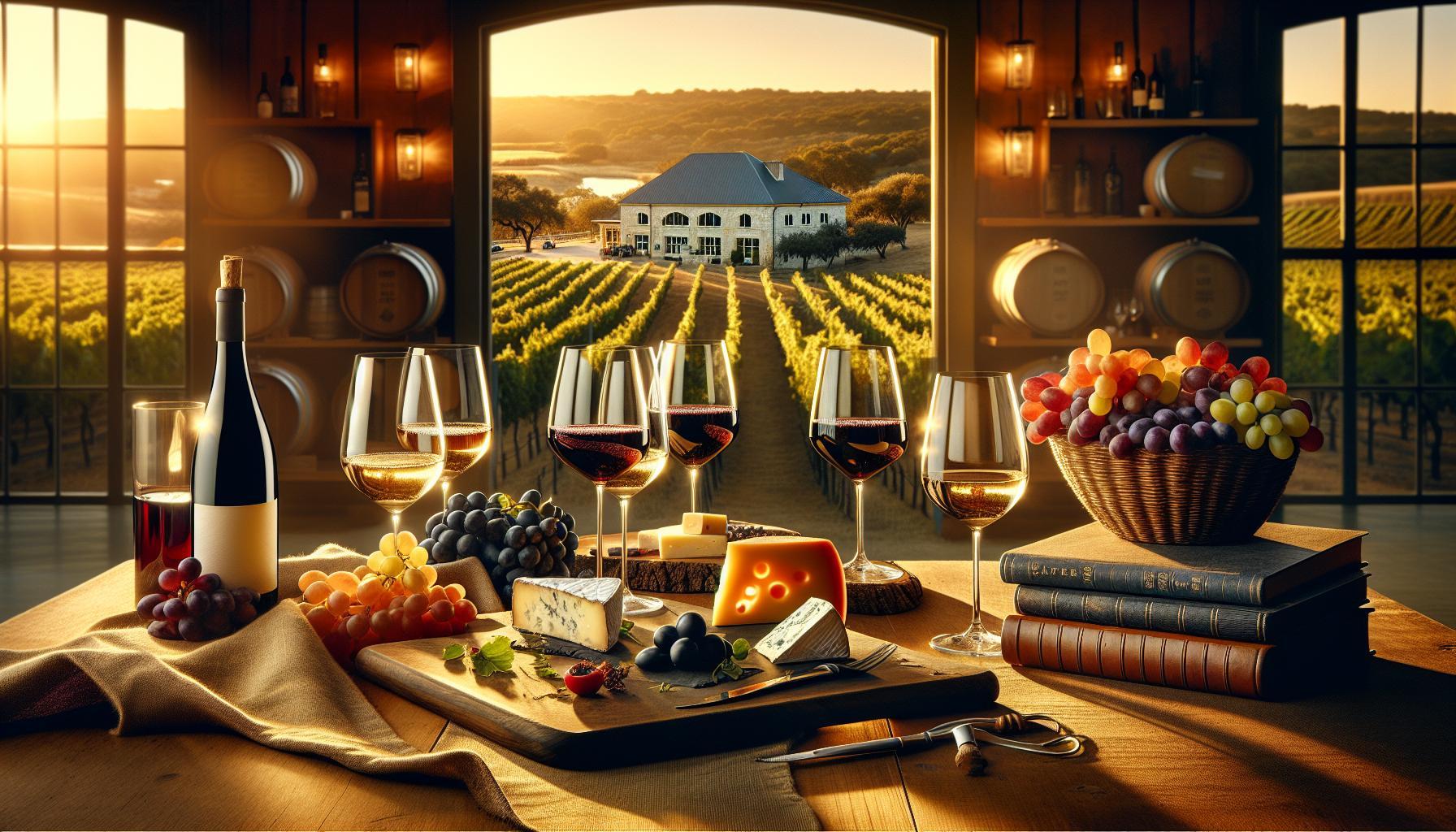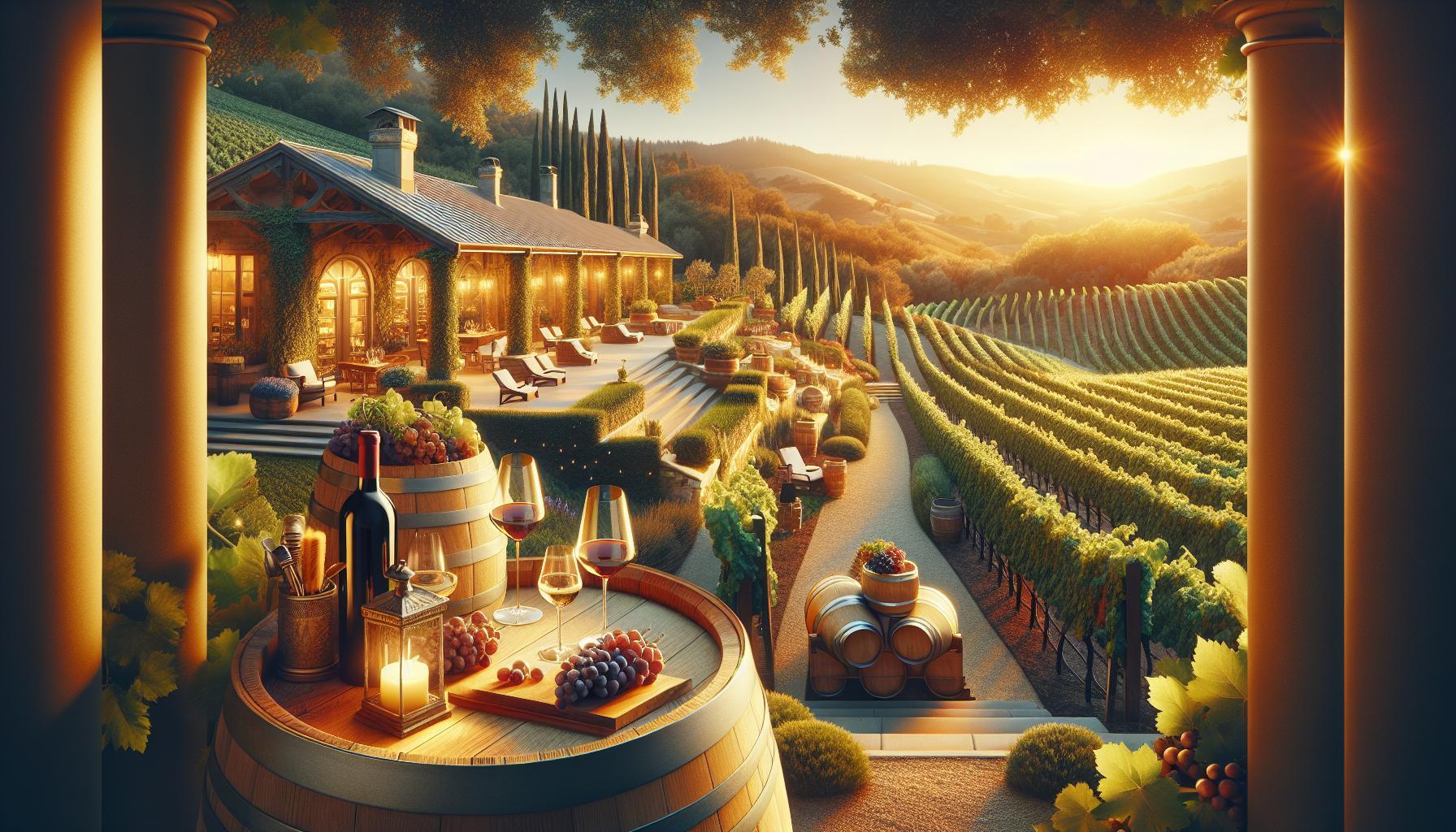When planning a visit to a winery, the early closing hours often catch wine enthusiasts by surprise. As it turns out, wineries maintain unique schedules shaped by the rhythms of the vineyard and the art of winemaking itself. Understanding why these establishments close their doors earlier than one might expect reveals a deeper connection to the craft, the care that goes into each bottle, and the impact of seasonal cycles on wine production.
This exploration not only sheds light on winery operations but also enhances your appreciation for the wines you savor. By delving into the reasons behind these hours, you’ll discover the harmony between the artisan work of winemaking and the time needed to perfect their craft-fostering a sense of respect and mindfulness for the stories each bottle holds. So, let’s embark on this journey to uncover the industry’s schedule and what it means for your next tasting experience.
The Hidden Rhythm: Understanding Winery Hours
The world of wineries operates on a rhythm that is uniquely attuned to both the land and the seasons. While many visitors wonder why wineries often close their doors by early evening, this schedule is steeped in tradition and practicality. Winemakers and vineyard staff rise with the sun to tend to their vines and oversee the meticulous process of production. As the day wanes, much of the evening is devoted to essential behind-the-scenes operations, which include tastings, winemaking decisions, and administrative responsibilities that ensure the smooth operation of the winery.
Understanding winery hours requires a nuanced exploration of several interconnected elements. For one, the harvest season, which typically spans from late summer to fall, dictates heavier workloads as grapes reach their peak ripeness. Winemakers often find themselves working late into the night during this critical time. Conversely, during the dormant winter months, hours might be adjusted, allowing for longer openings for visitors seeking a cozy escape from the chill. This seasonal rhythm not only reflects the agricultural calendar but also acknowledges the fluctuating demands placed on those who cultivate and produce wine.
Moreover, wineries strive to balance their business models with the guest experience. The time a winery allocates for tastings is an opportunity for guests to connect with the land and its stories, creating lasting memories that resonate long after the visit. Conversations over a glass of finely crafted wine often reveal the depth of passion that fuels these establishments. Thus, while early closing hours might seem limiting to some, they often provide a thoughtful space for reflection and refinement, allowing both staff and guests to indulge in the intimate experience that wine culture fosters.
This delicate interplay of rhythms-of nature and human endeavor, guest engagement, and the demands of production-shapes the hours of operation in more ways than one. As visitors grow more attuned to the winery experience, they find that these seemingly restrictive hours open the door to a deeper appreciation of the craft, inviting them to return at a time when they can truly savor the artistry poured into each glass.
Cultural Significance of Winery Operating Times
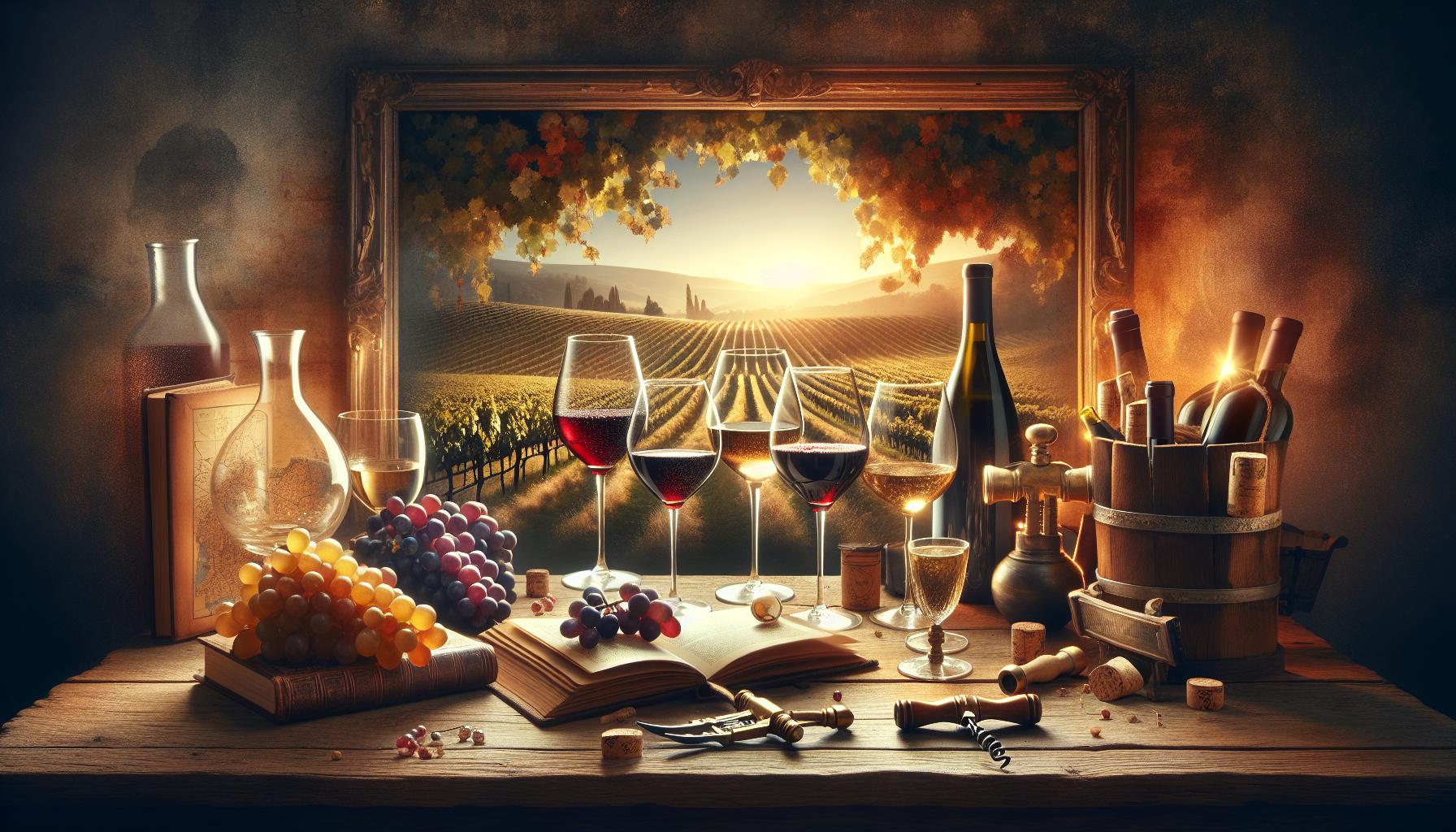
Operating hours at wineries are not merely dictated by business logistics; they echo rich cultural traditions, seasonal rhythms, and a profound respect for the land and its offerings. Like a well-aged Cabernet, the significance of these hours deepens over time, revealing layers of meaning to those willing to sip slowly and savor the experience. In many wine regions, including Napa Valley, the early closing hours reflect the historic insights passed down through generations of winemakers who understand that balancing nature’s clock with human activity creates a harmonious experience for all involved.
Winemakers rise with the sun, nurturing their vineyards and overseeing the metamorphosis of grapes into wine. This deep connection to the agricultural calendar informs their operational choices. As the sun sets, their duties shift to the intricate processes involved in crafting the wine, from blend decisions to meticulous cellar work. This natural rhythm allows for an intimate connection between the winemaker and the visitor, who, by visiting during the day, is invited to engage in the story of the land and the fruits it bears. Visitors often discover that the time spent in the tasting room is not just about sampling the wine; it’s about understanding its lineage-how the land, sun, and human care coalesce to create each unique bottle.
Embracing Guest Experience
The cultural significance also lies in the winery’s commitment to providing an unforgettable experience for guests. Tasting sessions are designed to nurture connection and reflection rather than quick consumption. Early closing hours encourage a contemplative atmosphere where visitors can explore the flavors and aromas of their wines at a leisurely pace. This sense of intention resonates with guests who appreciate the subtleties of wine, fostering an appreciation for the artistry involved in winemaking.
In addition, these hours reflect a broader cultural narrative where wine is seen not just as a beverage, but as a social catalyst-a means to gather, celebrate, and connect. When wineries close early, they invite guests to be present in the moment, to enjoy the sunset over the vineyards, and to engage in conversations that deepen their understanding of both the wines and the people behind them. It’s a gentle reminder to embrace the slow pace of life that wine culture often advocates, inviting guests to relish the journey rather than rush to the next destination.
A Living Tradition
Ultimately, the operating hours at wineries serve as a window into a rich tapestry of tradition, experience, and community. They reflect a deep respect for the craft of winemaking and the culture that surrounds it. Understanding these rhythms allows visitors to appreciate not only the wines they enjoy but also the stories of those who create them. As you explore these remarkable spaces, take a moment to engage with the wine, the land, and the people-each glass tells a story that is waiting to be discovered.
Balancing Business and Guest Experience
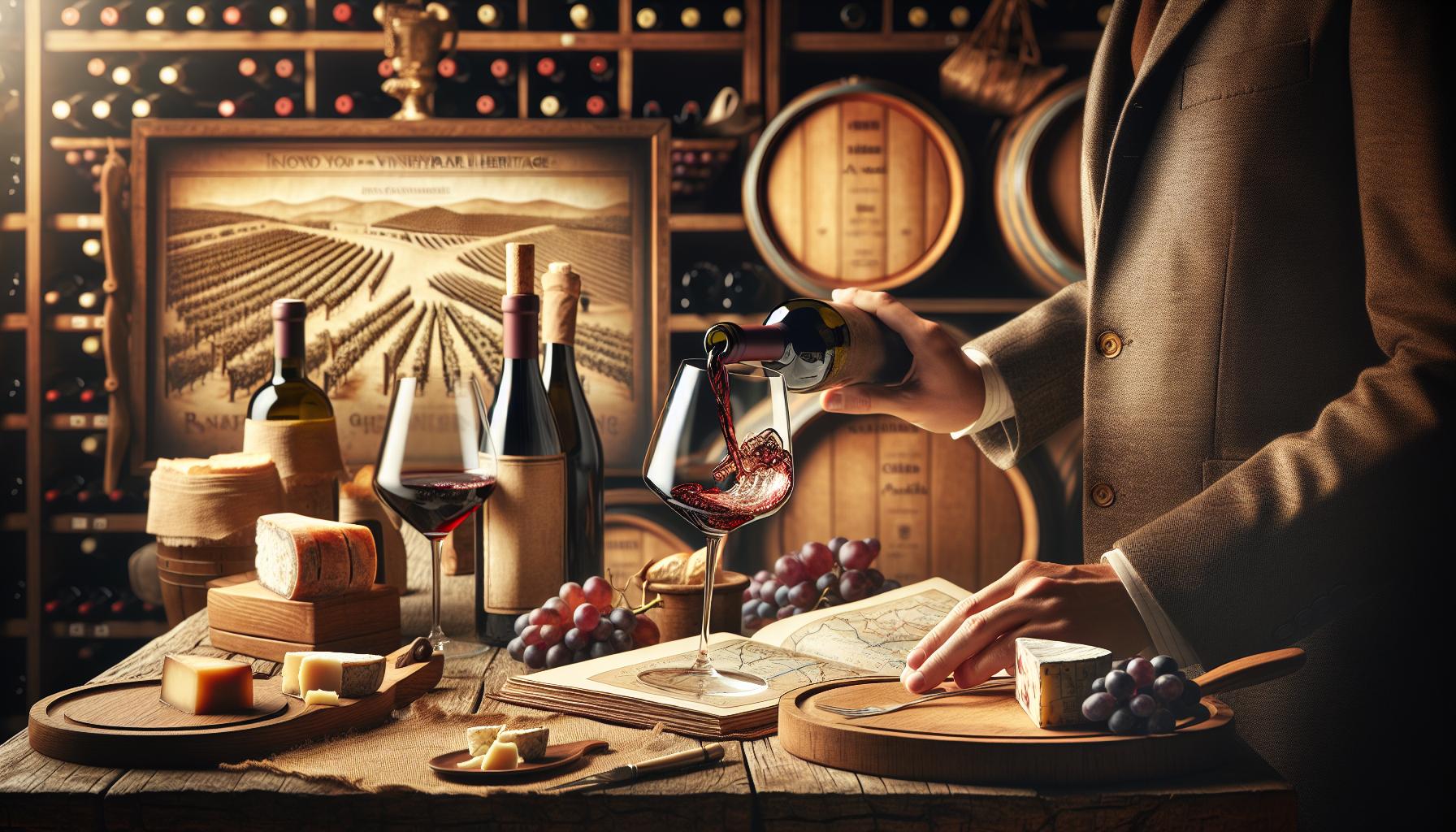
The early closing hours of wineries are not merely a matter of business logistics; they represent a delicate balance between fulfilling operational needs and enriching the guest experience. Understanding this intricate dance can deepen visitors’ appreciation for the wines they enjoy and the stories behind them. Winemakers often prioritize quality over quantity, crafting an experience that invites guests to engage with the land, the process, and the people who create these exceptional wines.
Many wineries operate with a structure that integrates tasting sessions, vineyard tours, and educational experiences, all designed to foster a profound connection with the terroir. By closing early, wineries enable their staff to conduct these experiences in a thoughtful, unrushed manner. This intentional pacing helps create a serene environment where visitors can savor each sip, contemplating the nuances of flavor that reflect both the vineyard’s characteristics and the winemaking philosophy. Such an atmosphere cultivates a sense of reflection and community, allowing conversations about wine to flow freely, much like the wine itself.
Moreover, early hours align with the natural rhythms of vineyard life. The wine industry operates on a cycle that begins at dawn and continues until the late afternoon, with winemakers often still engaged in crucial tasks after guests depart. This rhythm ensures that the artistry of viticulture is respected and integrated into the visitor experience. Just as a well-crafted wine reveals itself slowly over time, so too does the depth of knowledge shared with guests throughout the day. This approach has the dual benefit of enriching the guest experience while ensuring that businesses can operate sustainably and with integrity.
In an era where experiences are often rushed and supercharged by modern demands, wineries that embrace this slower pace are positioning themselves as havens of mindfulness. They invite guests to put aside distractions and immerse themselves in the moment, enjoying the subtleties of each wine while surrounded by the beauty of nature. In this way, the early closing hours underscore a broader commitment within the wine community to foster genuine connections, both between people and with the land that nurtures their beloved vintages.
What Influences a Winery’s Schedule?
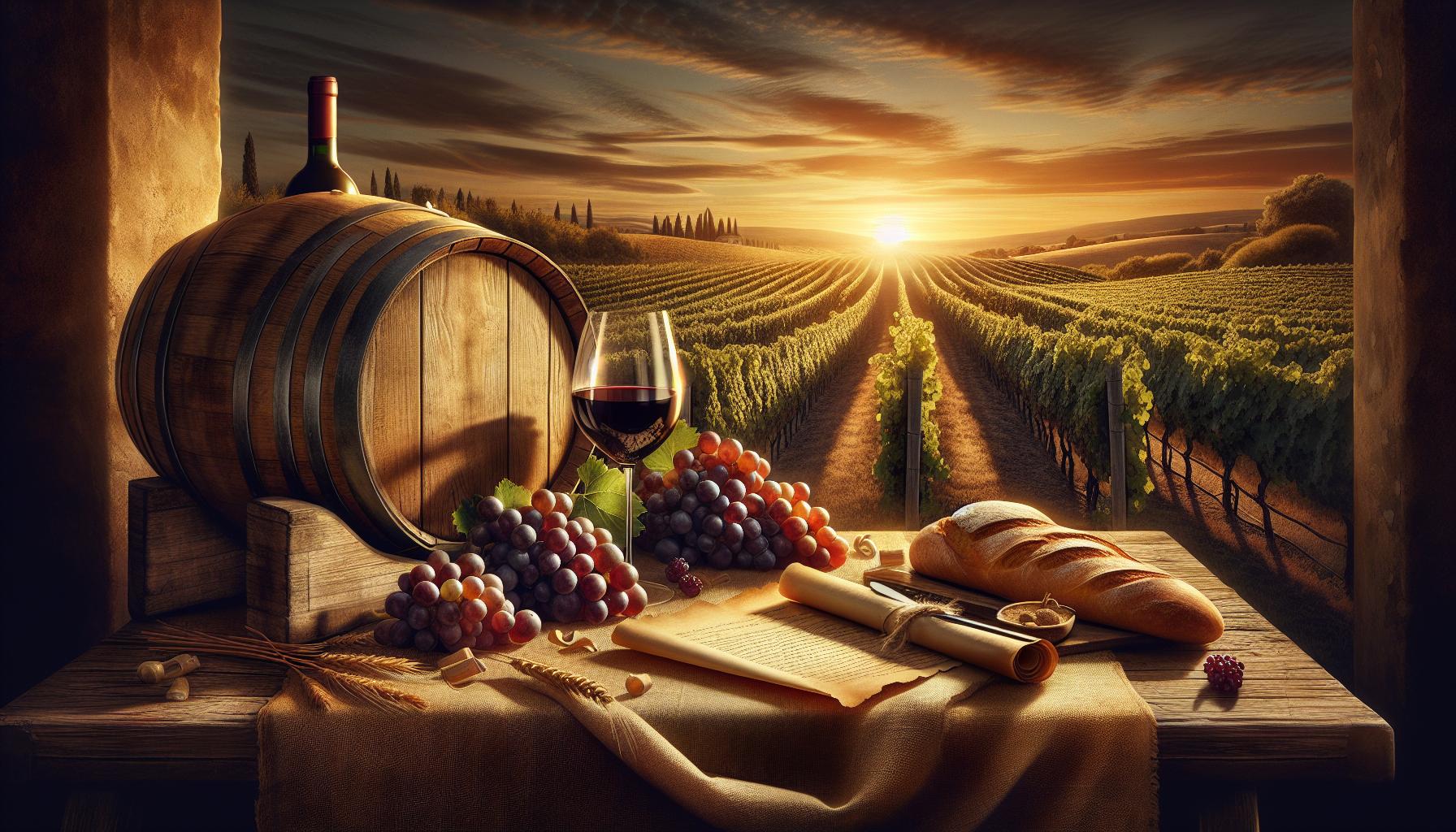
The operational hours of wineries are shaped by an intricate interplay of factors that ripple through every aspect of vineyard life. While the romantic image of sipping wine at sunset beckons, the reality is often influenced by a practical alignment with natural rhythms, labor demands, and guest experiences. Consider this: vineyards are living ecosystems, where the cultivation of grapes is not just an agricultural endeavor but an art form that requires patience and attentiveness. Most winemakers and their teams start their day at dawn, driven by the urgent call of vineyard maintenance and grape readiness. This early start naturally lends itself to a closing time that respects the labor-intensive processes that occur long after the tasting rooms shut their doors.
A winery’s schedule is also shaped by the seasons and grape phenology, which dictate various stages of growth and harvest. For instance, during the busy harvest season, wineries may adjust their visitation hours to accommodate the flurry of activity in the fields. In contrast, the slower winter months might offer extended hours to captivate those curious about the intricacies of winemaking. The flexibility in scheduling reflects not only the commitment to crafting exceptional wines but also the need to balance visitor engagement with the rigorous demands of the winemaking calendar.
Moreover, the cultural context of a winery plays a significant role in its operating hours. Wineries located in renowned wine regions such as Napa Valley or Sonoma often create schedules that enhance the visitor experience, featuring special events or themed tastings that align with local traditions and seasonal celebrations. Such events can encourage later hours on select days, allowing for a festive atmosphere that celebrates both wine and community.
In addition, a winery’s commitment to sustainable practices influences its schedule. Many wineries prioritize quality over quantity, choosing to limit high-capacity days that might detract from the personal engagement and educational opportunities they wish to offer. When a winery creates a tranquil environment where guests can genuinely connect with the wines being poured, the early closing hours take on new meaning-as a commitment to fostering memorable experiences rather than just maximizing profit. The philosophy behind these operational decisions ultimately leads to a richer, more immersive journey through the world of wine, inviting guests to explore thoughtfully rather than rush through the experience.
Seasonal Variations in Winery Hours
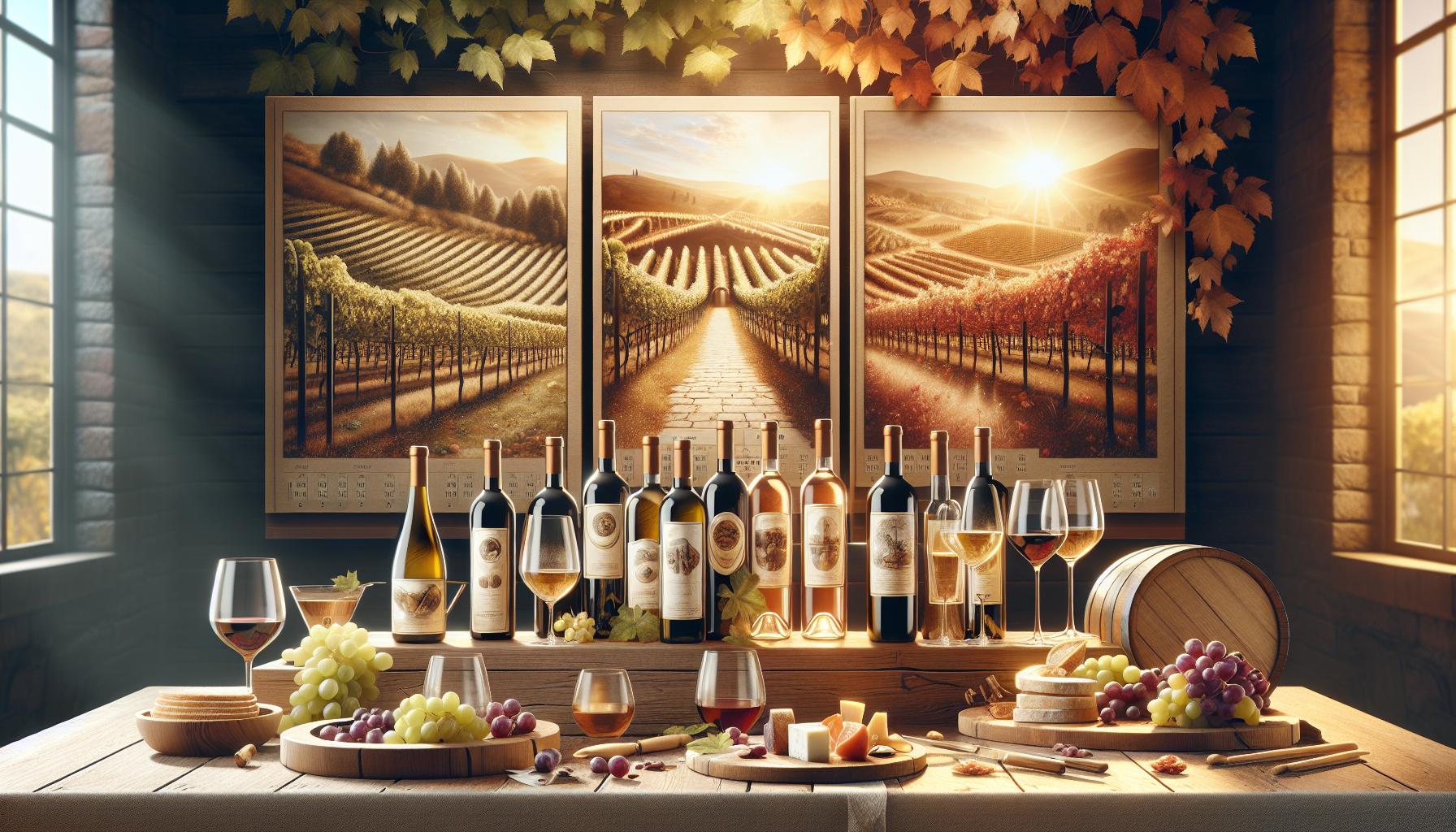
The rhythms of nature profoundly influence winery hours, creating a unique dance between the changing seasons and the vineyard’s operational needs. As summer sun ripens grapes to perfection, tasting rooms often extend their hours, welcoming visitors eager for exploration as long afternoons blend into balmy evenings. In contrast, winter’s chill ushers in earlier closing times; the vineyard, at rest, shifts focus inward, offering a more intimate atmosphere for wine lovers who seek refuge from the cold. At this time, wineries might host cozy tastings by the fire, emphasizing the warmth and comfort that great wine can bring, even on the frostiest of nights.
During the harvest season, the calendar can shift dramatically. Wineries may find themselves bustling from dawn to dusk, accommodating the surge in activity as grapes are picked and processed. This is a time when the vineyard is alive with urgency; thus, tasting room hours can become more fluid, opening earlier and closing later to allow guests a close-up view of the winemaking process at its zenith. This temporal flexibility invites wine enthusiasts to witness the heart of winemaking, where they can sip on freshly pressed juice, perhaps even before it has transformed into wine, learning firsthand about the intricate balance of hard work and artistry that defines the craft.
Ultimately, the season not only dictates when a winery is open, but also shapes the narrative of the visitor experience. Special seasonal events are often curated to align with these changes, providing an engaging backdrop for tasting local favorites. For instance, spring might inspire floral-themed tastings, while harvest time may celebrate the bounty with grape stomping festivals and blending sessions, transforming a simple winery visit into a memorable, multifaceted experience. Understanding these seasonal variations enriches the journey, allowing wine lovers to savor not just the flavors in their glass, but the very essence of the land and the people who nurture it.
Behind the Scenes: Daily Winery Operations
There’s a hidden symphony of activity that orchestrates each day within a winery, with its rhythm influenced by both practical needs and the cultivation of a guest experience that feels both intimate and memorable. Behind the picturesque landscape of vines and rustic buildings lies a carefully choreographed schedule that aligns with the natural cycles of grape growing, fermentation, and aging. As the sun rises, a flurry of tasks begins, each vital to ensuring that the wine produced reflects the land’s character and the winemaker’s artistry.
In the early hours, the vineyard workers breathe life into the fields, checking the health of the vines and preparing for any necessary maintenance. Soil health and moisture levels are assessed, with decisions made about irrigation or pest management that can significantly impact the day’s work. These behind-the-scenes activities happen well before the tasting room doors open. The preparation for guests requires as much care and planning as the winemaking itself, as the team curates experiences that will educate and enchant, often weaving in stories of the land and its history.
As the day unfolds, the winery buzzes with a mix of production and hospitality. The winemaking team might be busy monitoring fermentation processes, conducting tastings of wines at various stages, or preparing for special events. Meanwhile, the front-of-house staff gears up for the tasting experiences. This often involves staging the space: polishing glassware, selecting wines for the day’s tastings, and crafting informative yet enticing narratives about each pour. Such efforts create an inviting atmosphere that welcomes visitors into the world of wine, allowing them to appreciate the nuances of flavor and the meticulous care that goes into every bottle.
When the sun dips below the horizon, those working at the winery do not simply close the doors and leave. Evening hours can often involve additional activities, from hosting private wine dinners to preparing for upcoming tours. The scheduling of these events reflects a delicate balance; while the tasting room might close early to allow staff to rest, the heart of the winery continues to beat, ensuring that the experience of the craft of winemaking extends well beyond the hours of operation. Thus, the cycle of a day’s work in a winery encapsulates more than just the hours of welcome-it is an ongoing dialogue between the earth, the grapes, and the people dedicated to bringing that marvelous connection to life.
The Role of Wine Events in Scheduling
Hosting special events is a critical component of a winery’s operational schedule, intricately woven into the fabric of its daily life. These gatherings-be they intimate tastings or grand celebrations-are opportunities for wineries to showcase their unique offerings and foster a deeper connection with their visitors. They also require meticulous coordination, often impacting operating hours and staffing needs. For instance, when a winery schedules a highly anticipated vineyard dinner, preparations begin well before the sun sets on the tasting room. Staff may spend days crafting a menu that pairs perfectly with the wines being highlighted, all while transforming the space into a charming venue that invites guests to feel at home amid the vines.
Creating Memorable Experiences
Wine events serve more than just a practical purpose; they are a vehicle for storytelling and sharing the culture of winemaking. Offering exclusive tastings or themed dinners allows wineries to provide an immersive experience where the essence of the wine and the land is conveyed. Imagine savoring a velvety Cabernet Sauvignon while learning about its terroir-the specific conditions that shape its flavor profile-directly from the winemaker’s lips. Such connections elevate a simple tasting into a multi-sensory journey, fostering a sense of community and enhancing the overall guest experience.
The rhythms of event scheduling also reflect seasonal considerations. Summer may beckon evening celebrations under the stars, while fall harvest events pull in visitors eager to partake in the grape-picking festivities. As seasons shift, wineries often adapt their hours accordingly, opening earlier or extending evening events to capture the perfect twilight moments for tours and tastings.
The Balance Between Production and Hospitality
Behind the scenes, these events hinge on a delicate balance between the demands of production and the hospitality needs of guests. While certain staff may prepare for events, others remain dedicated to the intricacies of winemaking-conducting tastings, monitoring barrels, or handling logistical details. This complex dance ensures that the winery not only meets its operational goals but also provides guests with memorable experiences that call them back again and again. It is this harmonious intertwining of production and celebration that underpins what many cherish about visiting a winery: the chance to engage fully with the wine, the people who make it, and the stories that echo through the vineyard rows.
In essence, wine events are more than mere additions to a winery’s schedule; they embody a philosophy that values relationships over transactions, cultivating a welcoming atmosphere and a community of wine lovers that extends beyond any single visit. Embracing this notion can transform a casual outing into a cherished ritual, where each glass poured tells a tale of time, place, and passion.
Impact of Local Regulations on Opening Hours
Regulations governing winery operating hours can often seem perplexing, yet they serve crucial roles in maintaining both community standards and the integrity of the wine industry. Many regions impose specific laws that dictate when wineries can open or close, a factor that might help explain why some establishments cease operations earlier than one would expect. These regulations can vary significantly depending on local jurisdictions, meaning that what applies in California may not hold true in Oregon or New York.
Local governments often enact laws around alcohol sales that are reflective of broader community values and concerns, particularly regarding noise and public safety. For instance, in wine country, there can be restrictions aimed at minimizing late-night disturbances-essentially a balancing act between business needs and residential harmony. To this end, many wineries operate earlier hours during weekdays, often closing by dusk. This not only complies with local ordinances but also encourages a tranquil atmosphere in the vineyards, which many owners cherish.
Moreover, compliance with such regulations often requires careful planning, compelling wineries to strategize their schedules around legal constraints. This can lead to unique operational rhythms; for example, some wineries might function primarily during weekends to accommodate not only their guests but also local laws. Thus, several wineries enhance their operational flexibility through private events that can be pre-scheduled. These gatherings allow them to cater to clientele while remaining within the framework of local regulations.
Navigating through these constraints does not mean compromising on guest experience. Rather, it propels wineries to curate their offerings-whether that be through exquisite tastings at golden hour or exclusive vineyard tours that culminate before the evening. By aligning their schedules with legal mandates, wineries are not just mere tenants of local law but rather essential components of their communities, offering curated experiences that reflect both respect for regulations and a passion for wine culture.
Visitor Patterns and Peak Times in Wineries
The rhythm of visitor patterns at wineries can be as intricate and captivating as the wines they produce. Typically, weekends mark the peak time for winery visits, with many guests eager to indulge in tastings and tours after a long week. This influx creates a vibrant atmosphere, where laughter and clinking glasses echo through the vineyards, and the sun-drenched hills transform into a bustling hub of oenophiles. For many wineries, these weekends represent a significant portion of their annual revenue, necessitating a careful balance of staffing, resources, and experiences to accommodate the surge.
Understanding when to visit can enhance your wine experience immeasurably. Early afternoon is often the sweet spot-arriving around 1 PM allows guests to explore without feeling rushed and to enjoy tastings in a more serene environment. During this time, the sun casts warm light across the landscape, making for picturesque tasting sessions. In contrast, late afternoon may bring a slightly different tune; many wineries offer blending experiences or educational workshops that draw a crowd eager to learn and network. However, as the sun dips below the horizon, crowds often dissipate, leading to a quieter, more intimate tasting atmosphere.
For those looking to savor the tranquillity of the vineyards, weekdays can be a hidden gem. Visiting midweek allows for personalized service and leisurely tastings, where the staff can share their knowledge and passion without the pressure of a busy weekend. Moreover, many wineries offer exclusive vineyard tours or special tastings during these times, providing an opportunity to engage with the vineyard’s story more deeply.
Timing your visit not only enhances personal enjoyment but also allows guests to witness the cyclical nature of winery operations. Observing the transition from the hustle and bustle of peak times to the more contemplative atmosphere of slower periods can lead to a deeper appreciation of not just the wine, but the entire winemaking process. Whether enjoying a vibrant Saturday afternoon surrounded by fellow wine lovers or a peaceful Tuesday tasting accompanied by birdsong, the rhythm of winery visitation offers a window into the heart of wine culture and community.
Adapting to Trends: Do Wineries Change Hours?
The world of wineries is not just about the exquisite wines they produce; it’s also a dynamic landscape where operating hours are continuously evolving in response to trends. Many wineries are beginning to embrace a flexible approach to their schedules, adapting to the changing tastes and patterns of connoisseurs and casual visitors alike. This shift reflects a broader awareness of consumer preferences and a desire to enhance the guest experience across the board.
More wineries are recognizing the appeal of evening hours or unique events that cater to those who may not be able to visit during the traditional daylight hours. For instance, twilight tastings or “wine and dine” experiences are gaining popularity, allowing visitors to savor the romance of sunset among the vines. These events not only create an intimate atmosphere but also encourage social interactions that enrich the tasting experience. Wineries that leverage trending events-such as yoga followed by a tasting or food pairing dinners-often find themselves attracting a diverse crowd, eager for more than just a simple glass of wine.
The impact of social media cannot be understated in this context. Wineries are keen to capture the moment and sell an experience, not just a product. This has led to extended hours, especially during weekends and holiday seasons when foot traffic peaks. An efficient way to maximize this trend is by aligning the winery’s working hours with local events or festivals, tapping into heightened interest and participation. In addition, special promotions or themed nights can create an air of exclusivity, prompting varying schedules to accommodate different types of customers.
Local regulations and market conditions also play a key role in shaping winery hours. In regions where nighttime tourism is encouraged, wineries may extend their hours significantly, making them part of a vibrant local nightlife. This synergy not only benefits the wineries but fosters a sense of community among neighboring businesses. Adapting hours to align with these trends allows wineries to find new pathways for growth and profitability while remaining an integral part of the cultural fabric of their region.
In this ever-shifting landscape, the wineries that succeed will be those that anticipate trends, engage with their community, and remain open to changing their schedules to accommodate the desires of their guests. By doing so, they create not only a thriving business model but also a deeper appreciation for the art of winemaking and the experiences surrounding it.
Exploring Nighttime Wine Experiences
As the sun dips beneath the horizon, revealing a tapestry of twilight colors, the world of wineries begins to awaken in a different light. The enchanting experience of nighttime wine tasting is fast becoming a cherished part of vineyard culture, offering guests an invitation to savor both the essence of wine and the magic of the evening. Imagine the cool air, vibrant discussions around shared glasses, and the soft glow of lights illuminating rows of vines. This is not merely about enjoying a glass of wine; it is about immersing oneself in an atmosphere rich with possibility and connection.
Stepping into the realm of nighttime experiences, wineries are crafting events that transcend standard tastings. Starlit wine pairings, where the notes of the wine harmonize with the flavors of gourmet dishes, invite guests to engage all their senses. Picture an intimate gathering outdoors, perhaps around a firepit, as vintners share tales of their craft and the vineyards come alive with the sounds of nature settling in for the night. Unique events can highlight local culinary talent, feature live music, or even incorporate seasonal themes, enriching the experience and drawing diverse audiences.
One key to successfully embracing nighttime wine experiences is to create an inviting atmosphere that encourages interaction and exploration. Many wineries are adopting flexible scheduling to accommodate evening events, tapping into the concept of “wine and unwind” for those looking to escape from the rigors of their day. By offering twilight tastings that blend wine sampling with other leisurely activities-such as yoga sessions at sunset or evening art classes-wineries can engage a broader audience seeking memorable experiences rather than mere consumption.
Moreover, the allure of nighttime winery visits isn’t limited to weekends. Midweek evenings can become a canvas for local events, such as “Wine Wednesdays,” where wineries partner with food trucks or local chefs to create pop-up dining experiences. This not only enhances the winery’s visibility but also builds a sense of community and belonging among patrons. The key lies in understanding the local culture and weaving these experiences into the fabric of the region’s offerings, ultimately cultivating a vibrant, shared appreciation for wine and the stories it tells.
By navigating the delicate balance between artistry and commerce, wineries that embrace nighttime experiences can foster a deeper connection with their guests, turning casual wine drinkers into lifelong aficionados. Each glass poured at night holds the potential to illuminate not just the wine’s character but also the rich tapestry of human interaction, culture, and creativity that surrounds it. Like the wine itself, these experiences are meant to be savored, shared, and remembered long after the last drop has been enjoyed.
A Look at Global Winery Opening Practices
While vineyards across the globe may share a love for the grape, their opening hours and operating practices reveal cultural nuances as diverse as the wines produced. In regions steeped in tradition, such as France’s Bordeaux or Italy’s Tuscany, wineries often adhere to a rhythm dictated by local customs, climate, and clientele. Many French vineyards resonate with the notion of a leisurely lifestyle, reflecting the culture’s emphasis on savoring life; thus, you might find some of these wineries opening later in the morning and choosing to close in the early evening. It’s not unusual for tastings to happen in a more relaxed fashion during the later hours, allowing visitors to appreciate not just the wine but the entire sensory experience surroundings them.
Global Practices in Winery Hours
In contrast, New World wine regions like California or Australia typically embrace a more commercially driven approach. Here, you will often see wineries operating from midday until later in the evening, catering not only to tourists but also to locals seeking after-work socialization. This trend is especially pronounced in urban settings where wineries serve as venues for social gatherings, live music, and culinary events. As evenings turn into vibrant social hubs, wineries have adapted by extending their hours, offering twilight tastings or special events like “Wine and Dine” dinners.
Consider also how seasonal variations influence a winery’s schedule. In regions noted for extreme weather shifts, such as the hot summers of Napa Valley or the frigid winters of the Finger Lakes, winery hours may fluctuate significantly throughout the year. During peak harvest season, for example, many wineries may extend their hours to accommodate increased visitor traffic and capitalize on the scenic beauty of autumn foliage. In contrast, as temperatures drop or tourist activity diminishes, a focus on refined, intimate tastings may prompt shorter operating hours for a more curated guest experience.
Additionally, local regulations play a crucial role in shaping these practices. In some areas, legal constraints related to serving alcohol can restrict hours of business, compelling wineries to close early. On the other hand, many regions are increasingly allowing for longer hours to accommodate the demand for nocturnal experiences, thus inviting a fresh wave of guests seeking memorable evenings amidst the vines. The nuances of these regulations can vary dramatically even within the same country, leading to a patchwork of hours that reflect both the cultural ethos and the economic strategies of each winery.
In summary, as you traverse the global landscape of wineries, you’ll discover that opening practices are not merely a matter of convenience; they are deeply intertwined with cultural values, local customs, and industry dynamics. This relationship between wine and time is a captivating reflection of how the world interacts with this cherished beverage, inviting enthusiasts to pause, sip, and appreciate the artistry that flows from each bottle.
Frequently asked questions
Q: Why do wineries close so early compared to other entertainment venues?
A: Wineries often close early to accommodate the natural rhythms of vineyard operations, including harvesting and wine production. Closing by 5 PM allows staff to focus on these essential tasks while also catering to customers who typically visit during daylight hours, enhancing the tasting experience.
Q: What are the typical operating hours of wineries?
A: Most wineries operate from 10 AM to 5 PM or 6 PM. These hours align with peak visitor times, allowing ample opportunity for tastings and tours. It’s advisable to check specific winery hours in advance, as they can vary, especially seasonally.
Q: How does seasonal variation affect winery hours?
A: Winery hours may change seasonally due to daylight differences and visitor patterns. During summer, some wineries extend hours for evening events, while in winter, they may close earlier due to fewer visitors. Always confirm the schedule before planning a visit.
Q: Why do some wineries close on weekdays?
A: Many wineries close on weekdays to manage operational costs and focus resources on peak weekend visits when demand is highest. This strategy helps maintain quality service and allows staff to engage in necessary vineyard work during quieter days.
Q: Are there benefits to visiting wineries during early closing hours?
A: Visiting early often means fewer crowds, allowing for a more personalized tasting experience with staff. Early visits can also coincide with special tours or events that are less crowded, enhancing your appreciation of the winery’s offerings.
Q: How does the type of wine influence tasting room hours?
A: The type of wine produced and local consumer behavior can influence tasting room hours. Wineries specializing in certain varietals may host more evening events if those wines pair well with dining experiences, prompting longer hours during specific seasons or months.
Q: What should I know before visiting a winery regarding their schedule?
A: It’s essential to check a winery’s schedule online or call ahead, particularly for special events or holiday hours. Understanding the timing can help you optimize your visit, ensuring you take part in guided tastings or exclusive wine releases.
Q: Do wineries offer appointments outside their regular hours?
A: Some wineries do offer private appointments outside of regular hours for special events or guided tastings. It’s best to inquire directly with the winery about availability and any associated costs or requirements for exclusive experiences.
Closing Remarks
Understanding why wineries close early opens a window into the rhythms of winemaking, where tradition meets the necessity of rest. As you savor the nuances of your next bottle, consider the artistry behind every pour, deeply rooted in a culture that prioritizes quality over quantity. You’re now equipped with insights that might just inspire your next vineyard visit-perhaps a tasting at San Antonio Winery, where over a century of family heritage awaits you, or a delicious Italian meal that pairs perfectly with their award-winning wines.
We invite you to explore more about our local wineries and their unique offerings. Check out our guide on the vibrant California wine scene or dive into the history of legendary vineyards at San Antonio. Join our newsletter for the latest updates, exclusive content, and special offers that will enrich your wine journey. Don’t miss out; every sip is an opportunity for discovery, so take a moment to toast to your newfound knowledge and the fascinating world of wines that awaits you!

